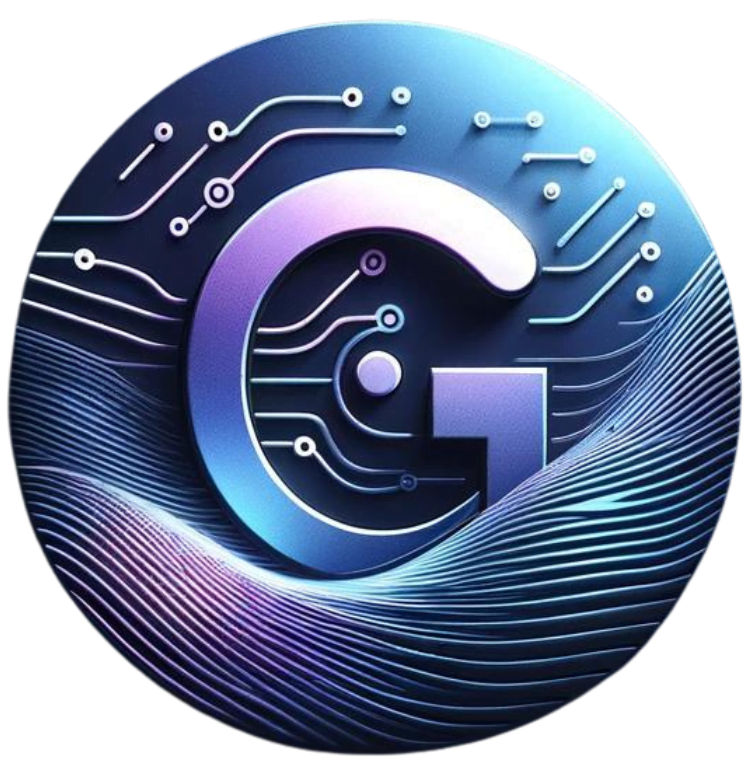Powerful 2026 Local Marketing Blueprint for TV, Radio and Digital

If you sell advertising for a living, 2026 feels noisy. That’s exactly why you need a clear 2026 local marketing blueprint. The blueprint explains how TV, radio, and digital now work together. They no longer fight for budget. Your local car dealer, HVAC shop, or medical group doesn’t want jargon. They want a simple path that shows where to show up. They need to know how often and what to expect.
“What actually works together now… and how should I spend my money?”
This guide is built to answer exactly that.
We’ll look at where audiences are really spending time. We will explore how TV, radio, and digital now support, not fight, each other. Then, we’ll walk through three simple, ready-to-use 3-channel plans. There will be one plan each for a local retailer, home services brand, and medical practice.
Where a 2026 Local Marketing Blueprint Starts: Audience Attention
The first step in any blueprint is reality. Not hype. Not platform sales decks. Reality.
Digital video and CTV: from “add-on” to default TV
Digital video is no longer the side dish. It is the main dish in the TV/video world.
In the U.S., digital video ad spend grew 15% in 2023. It is projected to grow another 16% in 2024, reaching about $63 billion. This growth is nearly 80% faster than total media. IAB
By 2025, digital video is expected to capture about 58% of all U.S. TV/video ad spend, outmuscling traditional linear TV. Influencer Marketing Hub
On the local side, CTV is exploding. BIA Advisory forecasts that ad spending on CTV in local markets will reach nearly $3 billion in 2025. This is triple the amount it was in 2020. AdImpact
What this means for local sellers
- CTV is now a core TV tactic, not a fancy add-on.
- Linear TV still brings broad reach, but CTV lets you narrow down by ZIP, income, interests, and even shopping behavior.
- Your TV conversation in 2026 should always be this: “Here’s how we blend linear and CTV.” This approach matches your goals and budget.
Audio: radio’s daily habit plus streaming and podcasts
Even with all the streaming buzz, radio remains the backbone of ad-supported audio. In late 2024, listeners spent 67% of their daily time with ad-supported audio on radio. The rest of their time was divided between podcasts, streaming audio, and satellite. Nielsen
Digital audio is growing too. Digital audio revenues (podcasts, streaming music, digital radio) hit $7.6 billion in 2024, up 8.5% year over year. Adtonos
Podcast ad revenue alone is on track to approach $2.6 billion by 2026, and nearly half of weekly podcast listeners say they’ve bought something after hearing a podcast ad. IAB+1
What this means for local sellers
- Radio still owns habitual, in-car and at-work listening in most markets.
- Streaming audio and podcasts are perfect companions for higher-income, heavy-mobile audiences and niche interests.
- A “modern audio” plan almost always includes broadcast + streaming and, where possible, podcast placements or sponsorships.
Social video and the creator platforms
Creator platforms like YouTube, TikTok, and Instagram Reels are now more than just “places to post.” A recent WPP forecast suggests that creator-driven platforms will generate more ad revenue than traditional media (TV, print, audio, cinema) in 2025. This marks a huge pivot from just a few years ago. Business Insider
What this means for local sellers
- Short-form video is now a second storefront, especially for retail, restaurants, and personal care.
- TV and radio drive reach and authority. Social video personalizes the brand story. It showcases offers in real time.
- Your proposals should explicitly connect “awareness” (TV/radio/CTV) with “proof and personality” (social video).
TV isn’t dead. It’s fragmented.
Even with all the fragmentation, adults still spend roughly 32 hours per week with TV content across linear and streaming. Nielsen
The shift isn’t that people abandoned TV. It’s that “TV” now means:
- Linear broadcast/cable
- CTV and streaming apps
- FAST channels and on-demand viewing
What this means for local sellers
- You are not selling “TV vs. digital.” You are selling “TV as digital plus broadcast.”
- The real question for each client is: “How much reach do we need, and how much targeting do we need?”
- Then you weight linear vs. CTV accordingly.
What This 2026 Local Marketing Blueprint Means for Small and Medium Businesses
Let’s translate this into the reality of a local owner. Imagine a marketing manager who has maybe 30–60 minutes a week to think about advertising.
The big truths for 2026
- You can’t be everywhere.
Chasing every new platform is a recipe for burnout and wasted budget. - You must be findable and familiar.
Being visible when people are not shopping (TV, radio, social video) is essential. Being present when they are (search, maps, retail media, review sites) is crucial. This combination works. - Frequency still wins, but context now matters more.
Repetition on TV/radio builds memory. Consistent presence in search, local listings, and retail media captures demand. - These big truths sit at the heart of any 2026 local marketing blueprint that actually works in the field.
The simple blueprint
For most SMBs, a solid 2026 plan:
- Uses TV/CTV to create reach and visual authority.
- Uses Radio/Audio to stay top-of-mind during commutes, work, and routines.
- Uses Digital (search, social, and sometimes retail media) to catch people when they’re actively choosing.
Here are three examples. They show how this 2026 local marketing blueprint is applied to a retailer. It also illustrates implementation for a home services brand. Additionally, it demonstrates its use in a medical practice.
3-Channel Plan #1: Local Retailer (Fashion, Jewelry, Specialty Shop)
Goal: Drive in-store and online sales, especially around key seasons and promotions.
Primary audience: Adults 25–54, skewing female for many verticals, mid-to-upper income, heavy mobile users.
Recommended channel mix
- 40% TV/CTV
- 30% Radio/Audio
- 30% Digital
TV/CTV
- Run :15 and :30 spots on local broadcast and CTV inventory in your core ZIPs.
- Use TV/CTV for:
- Big seasonal events (Mother’s Day, back-to-school, holiday)
- Brand story (“why buy local,” quality, service, guarantees)
- Where possible, use shoppable or QR-friendly CTV formats, sending viewers to a promo page or lookbook. Retail media networks and CTV partners are increasingly offering shoppable video units. Nielsen+1
Radio/Audio
- Use high-frequency :30s and :15s on music, classic hits, or news/talk formats that match your buyer.
- Rotate:
- Promotions and limited-time offers
- Store events and trunk shows
- “3 reasons to shop local this weekend” style spots
- Layer in streaming audio wherever available to reach headphone listeners and younger buyers.
Digital
- Always-on search + local listings + review management
- Social video (Reels, TikTok, YouTube Shorts) showcasing:
- New arrivals
- Staff picks
- Try-on videos / behind-the-scenes
- For some retailers, test retail media networks (e.g., Walmart Connect) to intercept shoppers near the category, especially if the brand also sells on large marketplaces. Walmart Connect generated about $4.4 billion in ad revenue in 2024 and is used by nearly three-quarters of U.S. marketers, which shows how mainstream this tactic has become. Ecommerce North America+2Forbes+2
3-Channel Plan #2: Home Services Brand (HVAC, Plumbing, Roofing, Electrical)
Goal: Capture high-intent leads and protect market share year-round.
Primary audience: Homeowners 30–64, often dual-income, time-poor, research-heavy before purchase.
Recommended channel mix
- 25% TV/CTV
- 35% Radio/Audio
- 40% Digital
TV/CTV
- Use :15 and :30 spots to:
- Establish trust (local techs, years in business, guarantees, financing)
- Highlight seasonal needs (pre-season tune-ups, emergency services)
- CTV targeting can focus on:
- Homeowners in specific ZIP codes
- Income bands aligned with your most profitable customers
- Keep creative simple and reassuring: “When it breaks, call us first.”
Radio/Audio
- Radio is your trust and frequency engine here.
- Run consistent schedules on news, talk, country, classic rock—formats with high in-car and at-work listening.
- Focus on:
- Clear offers (“$89 tune-up before the first freeze”)
- Emergency promise (“24/7 live answer, no robots”)
- Community credibility (sponsoring local weather or traffic reports)
Digital
- High-intent search is non-negotiable. If you’re not there, a national aggregator is.
- Use:
- Paid search for “HVAC repair near me,” “plumber emergency,” etc.
- Local SEO, maps, and reviews (request reviews automatically after service).
- Experiment with:
- Local service ads on major platforms
- Simple remarketing: show follow-up display or short video ads to visitors who checked your site but didn’t convert.
- You can also test audio and podcast placements for education content (e.g., home improvement podcasts) given the growth in podcast ad revenue and listener responsiveness to ads. EMARKETER+1
3-Channel Plan #3: Medical Practice (Clinic, Dental, Eye Care, Urgent Care)
Goal: Build long-term patient relationships and fill appointment slots consistently.
Primary audience: Adults 25–64, often families, with strong concerns about trust, convenience, and insurance.
Recommended channel mix
- 35% TV/CTV
- 25% Radio/Audio
- 40% Digital
TV/CTV
- Use TV/CTV to humanize the practice:
- Meet the providers
- Show the facility
- Highlight short wait times, extended hours, or urgent care services
- CTV targeting lets you focus on households within certain distances. You can target specific demographics, which is critical for clinics drawing from specific neighborhoods. Nielsen+1
Radio/Audio
- Use radio for:
- Reminder messages (“Annual checkups prevent surprises”)
- Timely campaigns (flu shots, sports physicals, back-to-school exams)
- Sponsorships:
- Health segments on talk/news
- “Brought to you by…” tags in weather or news updates
Digital
- Search + local SEO for core services: “urgent care near me,” “pediatric dentist,” “eye exam same day,” etc.
- A modern, mobile-first website with:
- Online scheduling
- Clear insurance info
- Provider bios with photos and video
- Social:
- Short educational videos (myths vs. facts, quick tips)
- Community involvement posts (school visits, local events)
- For some practices, you can experiment with retargeting and lookalike audiences. This strategy is helpful in markets where insurance or large hospital systems are aggressive advertisers.
How to Use This 2026 Local Marketing Blueprint in a Sales Conversation
Think of this guide as a conversation map more than a rigid plan.
When you sit down with a local business:
- Start with attention, not tactics.
“Here’s where your customers actually spend time in 2026—on TV/CTV, radio/audio, and digital. Let’s match your budget to their behavior.” - Pick the closest blueprint.
Retailer? Home services? Medical? Start with the closest plan and tweak percentages. - Ask three grounding questions:
- What is the most important outcome in the next 90 days?
- Which customers are worth the most to you over a year?
- Where are you already seeing traction (if anywhere)?
- Co-create the mix.
Say, “Here’s how I’d split TV/CTV, radio, and digital based on what you just told me. Does that feel realistic?” That word—realistic—signals you’re on their side. - Add one test, not ten.
If they’ve never used CTV, streaming audio, or retail media, choose one new channel. Test it for 60–90 days, not five.
Final Thought: Your Role in 2026
In 2026, your value is not just inventory. It’s interpretation.
Your clients don’t need another slide deck of stats. They need exactly what this post is built to deliver:
- A simple, believable blueprint for how TV, radio, and digital now work together
- A clear budget mix they can afford
- And a guide they trust to adjust that mix as the market shifts
Use this 2026 local marketing blueprint as your starting point, then layer on your local insights and station strengths. That’s how you stop sounding like “media” and start sounding like the partner they can’t afford to lose.
Subscribe

